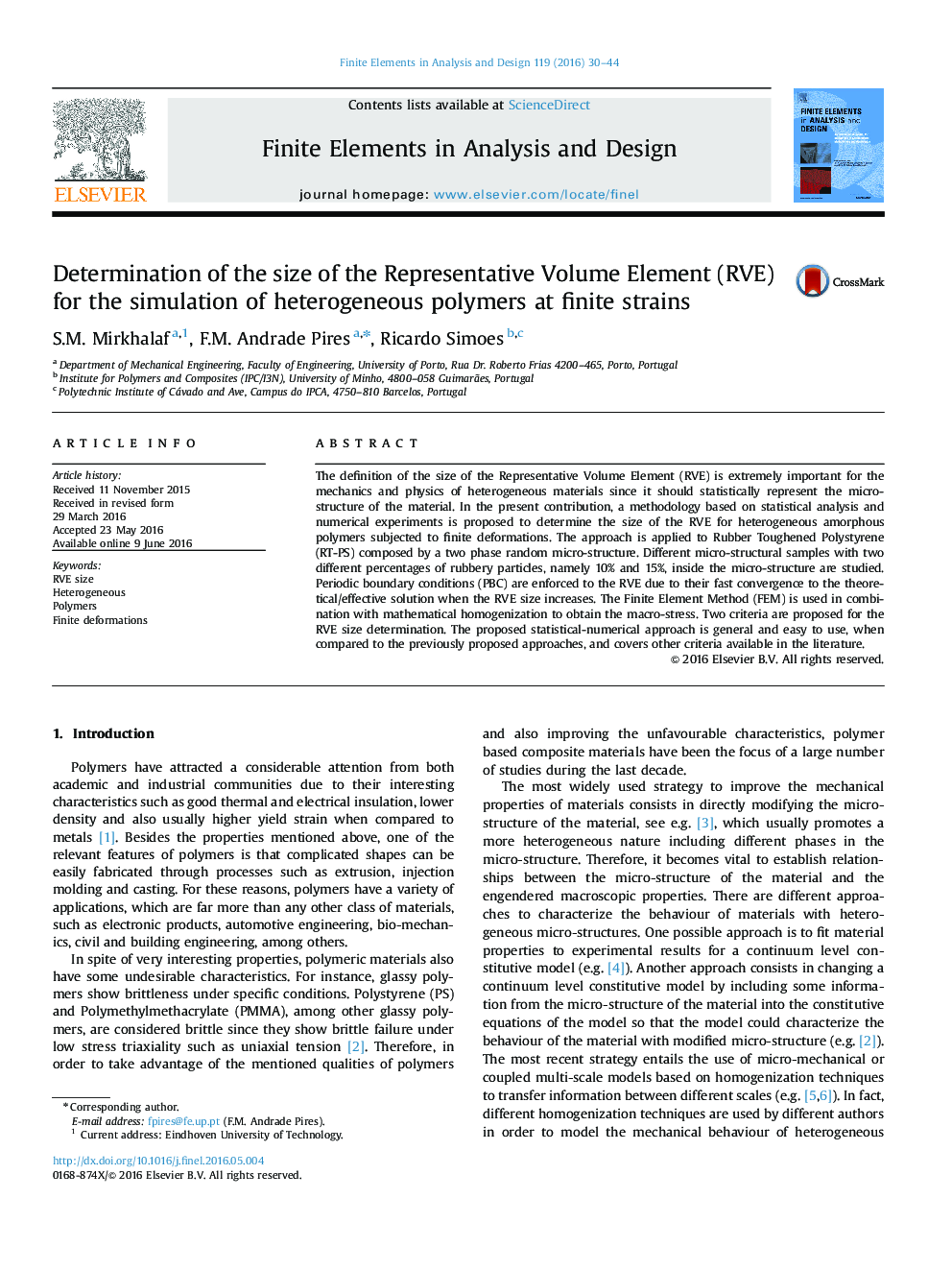| Article ID | Journal | Published Year | Pages | File Type |
|---|---|---|---|---|
| 513727 | Finite Elements in Analysis and Design | 2016 | 15 Pages |
•Computational homogenization at finite strains is used to determine size of a Representative Volume Element (RVE).•This work proposes a statistical-numerical approach, based on two criteria, to define the appropriate RVE size undergoing different regimes of deformation.•The strategy is applied to randomly generated RVE samples of heterogeneous polymers.•The RVE size of Rubber Toughened Polystyrene is determined for two different volume fractions of inclusions.
The definition of the size of the Representative Volume Element (RVE) is extremely important for the mechanics and physics of heterogeneous materials since it should statistically represent the micro-structure of the material. In the present contribution, a methodology based on statistical analysis and numerical experiments is proposed to determine the size of the RVE for heterogeneous amorphous polymers subjected to finite deformations. The approach is applied to Rubber Toughened Polystyrene (RT-PS) composed by a two phase random micro-structure. Different micro-structural samples with two different percentages of rubbery particles, namely 10% and 15%, inside the micro-structure are studied. Periodic boundary conditions (PBC) are enforced to the RVE due to their fast convergence to the theoretical/effective solution when the RVE size increases. The Finite Element Method (FEM) is used in combination with mathematical homogenization to obtain the macro-stress. Two criteria are proposed for the RVE size determination. The proposed statistical-numerical approach is general and easy to use, when compared to the previously proposed approaches, and covers other criteria available in the literature.
